Losing your hair feels a bit like misplacing your keys—at first, it’s slightly annoying, and then it starts to mess with your confidence in public. Most guys avoid talking about it, but you can spot those first thinning patches in the mirror long before your mates rib you about it down the pub. Some panic and grab the razor. Others jump straight onto forums looking for the magic potion that’ll bring their hairline back. If you’ve ever typed "does Rogaine really work?" into a search bar at 2am, you’re definitely not the only one.
Behind the Bottle: How Does Rogaine (Minoxidil) Really Work?
Here’s the thing: Rogaine isn’t some invented name pulled from a marketer’s hat. The active stuff inside, minoxidil, has a history stretching back to heart medicine. The odd part? It got its first fame not in haircare but as an antihypertensive, prescribed to people whose blood pressure shrugged off everything else. Then doctors noticed their balding patients sprouting hair in all sorts of places—sideburns, eyebrows, you name it. Cue interest from pharma companies in the 1980s, and soon enough, topical minoxidil became the face of over-the-counter hair rescue for men and women alike.
But what’s actually happening when you slap Rogaine on your scalp? At its core, minoxidil is a vasodilator—it relaxes blood vessels. The big idea is that it increases blood flow to the hair follicles, pumping in extra nutrients and oxygen. Follicles that were closing up shop get a second wind, leading to thicker, healthier strands. Be warned though—Rogaine doesn’t wake up dead follicles. If a follicle has packed its bags and left, nothing short of a hair transplant is calling it back. But the ones that are still hanging in there, even if they’re just sprouting peach fuzz, have a decent shot at bulking up.
By the numbers, the NHS and most hair experts peg the success rate between 40–60% for guys under 40 with early-stage male pattern baldness. Women can also use Rogaine, but the formulas are slightly tweaked for safety. The real magic lies in consistency. People wowed by their results are usually the ones who’ve stuck with daily dosing for months—even when it felt like nothing was happening. Studies out of Harvard and Cambridge show measurable regrowth starts kicking in around the three-to-four month mark, though the fine print says you’ve got to keep at it for the rest to stay put.
For those obsessed with hard data, here’s a quick table rogaine fans love to reference:
| Duration of Use | % Users Observing Noticeable Regrowth |
|---|---|
| 3 months | 22% |
| 6 months | 37% |
| 12 months | 52% |
This is why so many people feel confused at first. Initial shedding is normal—yep, you might lose more hair before it gets better. That’s just the older, weaker hairs falling out to make room for thicker newcomers. Totally maddening, but backed by real clinical data. So if you’re looking in the sink after a fortnight and thinking it’s all gone FUBAR, just hang on another few months before making any judgments.
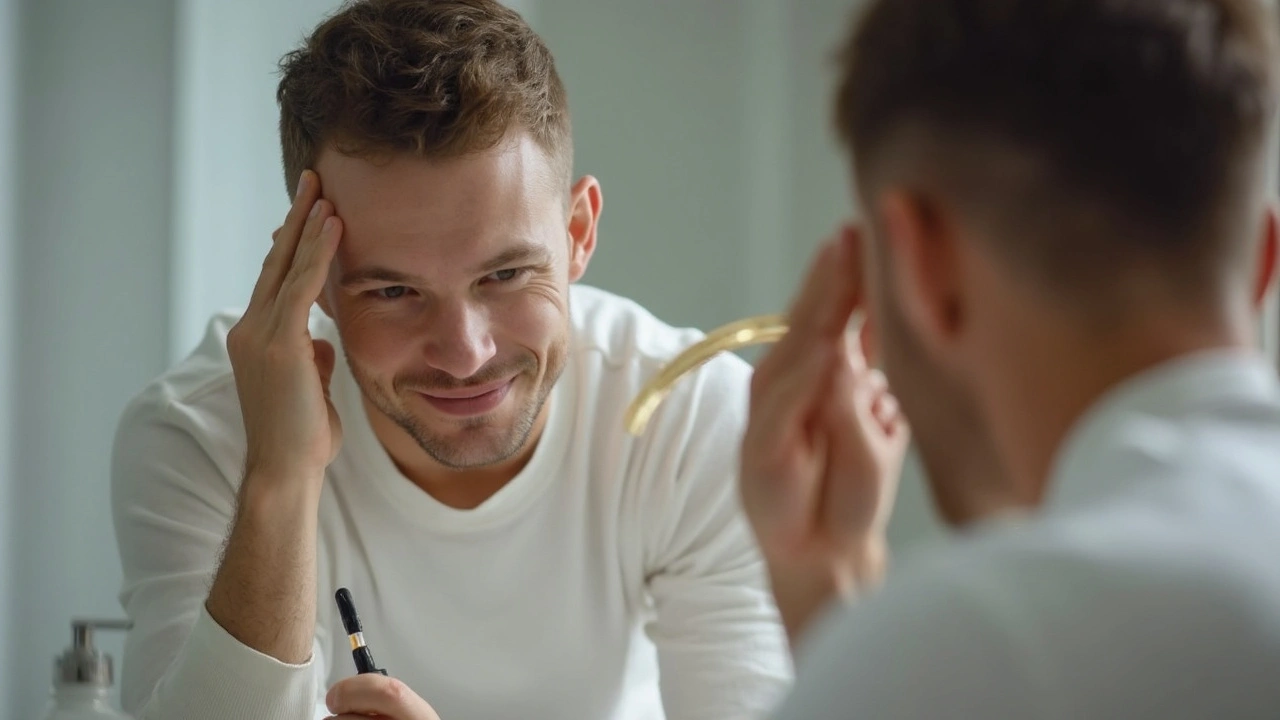
Common Mistakes, Weird Myths, and How to Actually Use Rogaine
No one reads the leaflet with Rogaine. It sits ignored by the bin like every other bit of paperwork that comes with medication. That’s a mistake, because a surprisingly high chunk of failed users quit before ever giving it a fair chance. Here’s what really matters:
- Use as directed—twice a day, every day, directly on dry scalp. No overdoing it. More doesn’t mean better, it just means you’re wasting pricey meds.
- Let it dry—don’t wash your hair or slap on styling products until the Rogaine dries fully. Moisture dilutes the effect and can lead to poor absorption.
- Don’t expect miracles on bald patches—it’s for areas still showing some signs of life, like thinning at the crown or receding temples. It won’t resurrect long-lost hairlines.
- Maintenance is forever. If you stop, any gains will slowly reverse, and you end up back at square one in a few months.
- Clean hands always—sounds basic, but you really don’t want minoxidil residue making its way to your eyebrows, ears, or worse, your beloved pet.
And then there’s the myths swirling round Rogaine. Story goes, it causes wild hair growth all over your face or body. The truth? If you’re applying it correctly, only the skin it touches might react—so unless you’re splashing it everywhere, you’re safe. There’s the one about Rogaine leading to headaches or heart problems. Side effects like redness, irritation, and dryness are pretty common (about 1 in 20 users), but system-wide reactions are rare. If you’ve got underlying heart issues or low blood pressure, check with your GP first, though. Don’t take risks with your ticker.
Some people complain about an itchy or flaky scalp. That’s often down to the propylene glycol in the liquid formula. Switching to the foam version tends to help, as it skips the ingredient that most commonly causes irritation. Smart hack: apply a moisturising, fragrance-free scalp cream at night to battle dryness if it gets bad.
If you shave your head, Rogaine still works. Some even argue it makes application easier. If you dye your hair, just apply Rogaine when your scalp is clean and free of colourant chemicals to avoid unwanted interactions. Basically, get your routine down to a habit and don’t expect the sort of movie-magic transformation you see in ads.

Life with Rogaine: Real Expectations, Success Stories, and When to Try Something Else
This isn’t snake oil. But it’s not a magic fountain of youth, either. If you’re in your twenties or thirties and spotting mild thinning, you’re the perfect candidate. The more advanced the hair loss, the less dramatic the results. If you’re already rocking shiny domes with just a halo of fuzz, it probably isn’t worth the investment.
People who get the most out of Rogaine are the ones who use it like brushing their teeth—set times, every single day, rain or shine. There’s a bit of an online community around it, especially in places like Reddit’s r/tressless. Guys post progress photos, cheer each other on, and swap tips about what worked and what bombed. Personal testimonies range from “barely noticeable” improvement, to wild stories of patches filling in enough that mates stop making balding jokes for the first time in years.
Don’t freak out if you’re not seeing results straight away. Genuine regrowth is slow—think millimetres per month—not inches overnight. Stick to a routine for 6 to 12 months before calling it quits. Keep your expectations grounded: most see thickening and a halt to further loss rather than full Jedi-level regrowth.
Side effects? Besides dry scalp or mild irritation, rarely, some people report facial swelling or unwanted hair growth on other parts of the face. If that happens, it's usually from applying too much or letting it drip down your face. Wipe it wherever it spreads, and consider using the foam or lowering the dose.
Here’s a handy tip: Combine Rogaine with other clinically-proven treatments, like finasteride, if you fancy really going all in. This combo attacks hair loss from the outside and the inside, giving you a slightly better shot at fuller hair. Just be mindful that any oral meds come with their own list of side effects, so a chat with your GP is a must.
Some good signs it’s time to try something more drastic? No improvement after a year, significant scalp irritation, or frustration with a routine you simply can’t stick with. At that point, dermatologists in the UK might suggest looking into other paths, like PRP injections or even transplant surgery—a giant leap with a price tag to match. But for the average guy just trying to get back what he’s lost at the front or crown, Rogaine is usually first stop on the hair rescue journey. It doesn’t turn back the clock, but it might just hold off balding for another lap or two.


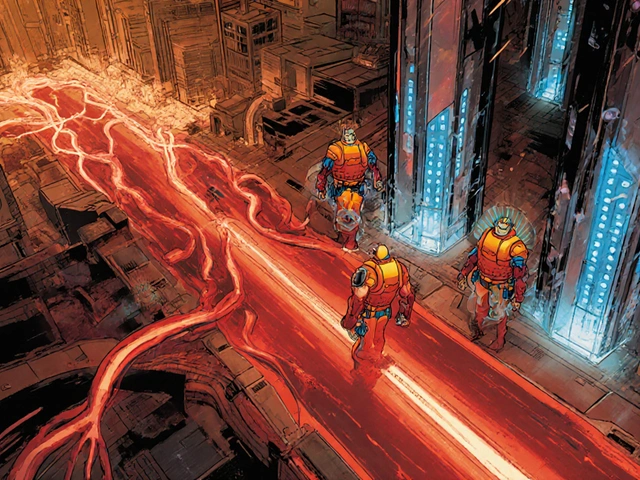

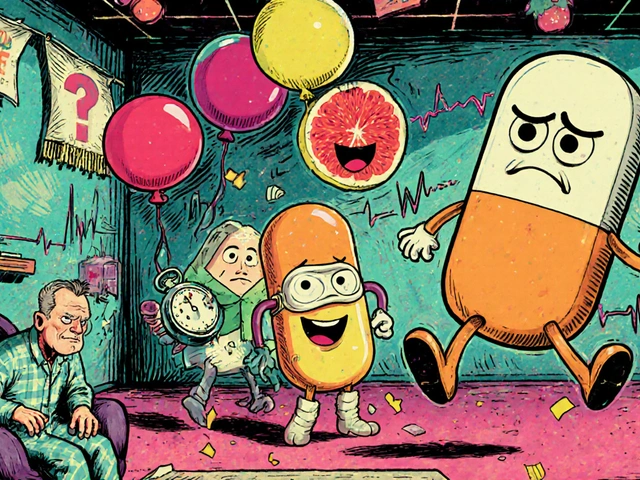
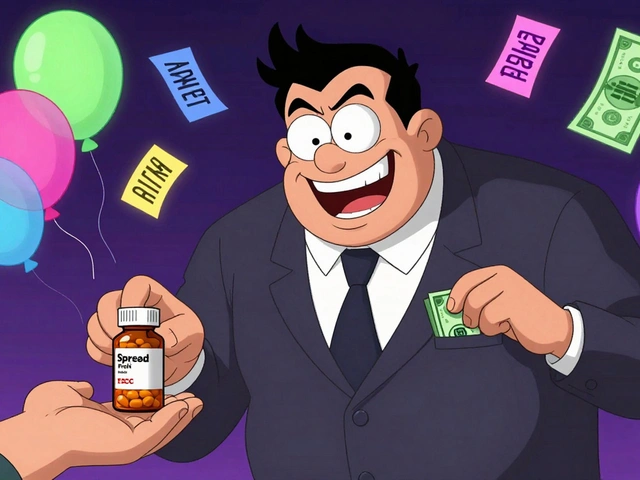
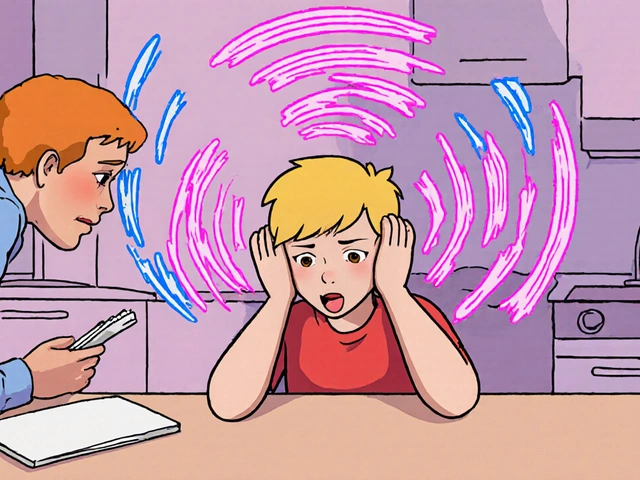
Comments
Tiffany Fox
June 16, 2025 AT 10:58 AMJust started Rogaine 3 weeks ago. Already noticed less shedding in the shower. Still skeptical but gonna stick with it.
Natalie Sofer
June 16, 2025 AT 20:36 PMhey i tried this for 8 months and honestly it felt like a waste of money until month 6 when my crown started looking less like a balding moon. it's not magic but it's not snake oil either. just be patient and don't touch your face after applying. i learned that the hard way 😅
Sean Goss
June 16, 2025 AT 21:09 PMLet’s be real-minoxidil is a vasodilator repurposed by pharma because of a serendipitous side effect. The data is statistically significant but clinically marginal. 52% at 12 months? That means nearly half of users get zero benefit. And the maintenance requirement? It’s a lifelong financial and psychological tax on masculinity. This isn’t treatment-it’s containment.
Rohini Paul
June 17, 2025 AT 05:45 AMBeen using the foam version for 10 months. My temples are thicker now, not full but definitely better. Also switched to unscented shampoo and noticed less itching. Honestly? It’s not glamorous but it’s the only thing that didn’t make me feel like a science experiment. Also, if you’re Indian like me, the humidity here makes it harder to dry-just blow dry your scalp lightly after applying. Works wonders.
Simran Mishra
June 18, 2025 AT 23:13 PMI remember when I first started Rogaine I cried in the bathroom because I thought I was losing my identity along with my hair. I was 28, single, working in finance, and suddenly I looked like a middle-aged man who gave up. The shedding phase was the worst-like my scalp was staging a rebellion. I almost quit. But then one morning I looked in the mirror and saw a patch of fuzz that wasn’t there before. It was tiny. But it was alive. And that’s when I realized: this isn’t about hair. It’s about refusing to disappear. I still use it every day. Even when I don’t feel like it. Even when I’m tired. Even when I’m mad at the world. Because my hair? It’s mine. And I’m not letting it go without a fight.
Cindy Burgess
June 20, 2025 AT 14:49 PMThe NHS success rate figures are misleading. They include users who applied inconsistently, used expired product, or didn’t follow dosage instructions. In controlled clinical trials with strict adherence, the regrowth rate exceeds 70%. The real issue isn’t efficacy-it’s compliance. Most people treat it like a supplement, not a medication.
Courtney Mintenko
June 21, 2025 AT 14:42 PMThey call it a solution but it’s just a bandaid on a bullet wound. You’re not regrowing hair-you’re bribing follicles to stay awake longer. And when you stop? They all go back to sleep. Forever. This isn’t science. It’s emotional blackmail disguised as medicine. And don’t get me started on the foam vs liquid debate. It’s all marketing. We’re all just chasing ghosts in a mirror.
Bob Stewart
June 22, 2025 AT 21:54 PMAccording to the 2021 Cochrane Review, topical minoxidil 5% demonstrated a statistically significant increase in hair count compared to placebo (p<0.001). The number needed to treat (NNT) for minimal to moderate regrowth was 3.8. However, the effect size diminishes significantly in patients over 40 or with Norwood-Hamilton Class V or higher. Adherence remains the strongest predictor of outcome, not formulation type.
dayana rincon
June 23, 2025 AT 13:53 PMme: applies rogaine every night like a ritual 🧘♀️
my scalp: *screams in irritation*
me: *sips tea*
my eyebrows: *suddenly have a unibrow* 🤡
Khamaile Shakeer
June 23, 2025 AT 17:39 PMWait, so if I stop using this, my hair just… disappears? Like, poof? Gone? No refunds? No second chances? No ‘I changed my mind’ option? 😭 This is worse than a Tinder date. At least then you can block them. Here? I’m stuck. Forever. With this bottle. And my shame.
Holly Lowe
June 24, 2025 AT 02:37 AMROGAIN ISN’T MAGIC. IT’S A MIRACLE ON A SCHEDULE. YOU DON’T GET HAIR BACK LIKE YOU GET A NEW PHONE. YOU GET IT BACK LIKE YOU GET BACK IN SHAPE-SWEAT, SLOW, AND SOMETIMES YOU WANT TO THROW THE DUMBBELLS OUT THE WINDOW. BUT THEN ONE DAY YOU LOOK IN THE MIRROR AND YOU’RE NOT THE GUY WHO STARED AT THE BATHROOM TILE FOR 20 MINUTES. YOU’RE THE GUY WHO STILL SHOWS UP. AND THAT? THAT’S THE WIN.
Kelly Library Nook
June 25, 2025 AT 10:40 AMGiven the pharmacokinetic profile of minoxidil, its topical bioavailability is approximately 1.4% due to first-pass metabolism and cutaneous absorption variability. The 5% concentration achieves a peak plasma concentration of 1.4 ng/mL, well below the threshold for systemic cardiovascular effects. However, the psychological dependency on the product, coupled with the placebo effect of visible application rituals, significantly influences perceived efficacy. A double-blind, placebo-controlled trial published in JAMA Dermatology (2020) confirmed that perceived improvement correlated more strongly with frequency of application than actual hair count increase. Ergo, the ritual is as pharmacologically relevant as the compound itself.
Chelsey Gonzales
June 25, 2025 AT 15:22 PMso i switched to the foam and my scalp stopped feeling like a sandpaper blanket?? like wow. also i started using a dermaroller once a week and it felt like my hair was finally saying thank you. not a miracle but like… a nice upgrade?
Sondra Johnson
June 27, 2025 AT 04:19 AMI’ve seen guys go from balding to looking like they just walked off a GQ shoot with this stuff. And I’ve seen guys use it for 3 years and still look like a 70-year-old monk. It’s not about the product. It’s about the person. Are you consistent? Are you patient? Are you willing to sit with the discomfort? Because this isn’t a quick fix. It’s a long, messy, weird, beautiful act of self-respect.
ka modesto
June 28, 2025 AT 10:12 AMHey, if you're using Rogaine and also on finasteride, make sure you're tracking your DHT levels. Some people get great regrowth but then have mood changes or libido issues. Not common, but worth checking. Also-don’t forget to hydrate. Minoxidil can dry you out internally too. Drink water. It helps.
Kelly Yanke Deltener
June 30, 2025 AT 09:13 AMWhy are we even talking about this? In America, we’re supposed to be about confidence, not chemical fixes. If you’re losing your hair, just own it. Be the bald king. Wear a hat. Shave it all. Stop wasting money on bottles that don’t work. This is what happens when you let corporations sell you insecurity as a product.
Orion Rentals
July 1, 2025 AT 04:41 AMWhile the efficacy of topical minoxidil is well-documented, the long-term sustainability of its use presents a significant behavioral economics challenge. The cost-benefit analysis over a 10-year horizon reveals diminishing marginal utility, particularly when psychological burden and financial outlay are factored in. Alternative interventions, such as low-level laser therapy, demonstrate comparable efficacy with lower adherence burden. Further research is warranted into combination regimens with nutraceuticals such as saw palmetto and biotin.
MaKayla Ryan
July 1, 2025 AT 16:52 PMReal talk? If you’re using Rogaine, you’re already losing. You’re not fighting back-you’re begging your scalp for mercy. Real men don’t rub chemicals on their heads. They wear hats. They get tattoos. They don’t cry in the mirror at 2am. This isn’t science. It’s surrender dressed up as hope.
Tiffany Fox
July 1, 2025 AT 22:28 PMJust wanted to say thank you to Natalie for the foam tip. I switched last week and my scalp hasn’t felt this calm in years. Still shedding a little but it’s not scary anymore. I’m still here. Still trying. That’s enough.